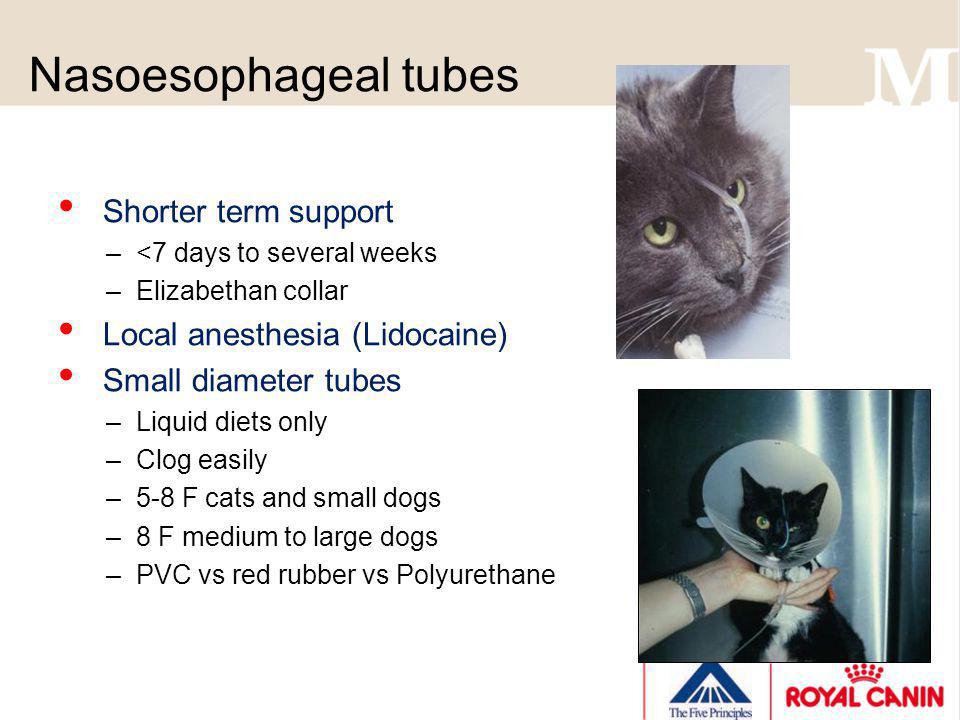In brachycephalic dogs and cats it may be necessary to place a smaller tube due to the smaller external nares.
Nasoesophageal feeding tube dog.
The availability of small bore soft polyvinyl and silastic feeding tubes i e 3 5 french 36 inch argyll or national catheter company and low viscosity nutritionally complete liquid diet formulations and patient tolerance of tube placement has made nasoesophageal nasogastric tube placement a popular avenue for feeding malnourished patients.
There are two types of feeding tubes that may be placed by technicians nasogastric ng and nasoesophageal ne tubes.
Nasoesophageal feeding tubes can be made of different materials including polyurethane polyvinylchloride silicone and red rubber.
The plan is to feed 50 rer on day 1 and 100 rer on day 2 and subsequently.
The diet choice is enteralcare mlp which has an energy density of 1 2 kcal ml.
A 5 french nasoesophageal feeding tube is placed in a 11 lb cat that has been anorectic for 3 days.
Enteral nutritional calculations 1.
Nasoesophageal versus nasogastric tubes.
To compare complication rates between nasoesophageal ne and nasogastric ng feeding tubes in dogs.
Feeding tubes are generally tolerated well by most patients and most feeding tubes are relatively easy to place.
Nasogastric ng tubes are inserted into the nostril through the nasal cavity into the esophagus.
How to safely and quickly place nasogastric feeding tube in cats by nancy sheffran rvt vts ecc video courtesy.
A total of 46 dogs that were fed through a ne n 28 or ng n 18 tube between january 2007 and december 2011 and that also had either thoracic radiography or computed tomography performed so.
Feedings are scheduled for 6 times a day every 4 hours.
1 2 15 16 vomiting and diarrhea are also reported but are usually related to feeding and can be resolved by adhering to the recommended protocol or changing the diet.
2 14 aspiration pneumonia may occur if the end of the tube.
Megan brashear cvt vts ecc demonstrates how to place a nasogastric feeding tube in a large dog including the proper placement testing and securing of.
When using a constant rate infusion to feed via a nasoesophageal feeding tube the patient should be.
A reasonable in hospital method of enteral feeding is through a nasoenteric tube alleviating this effect.

